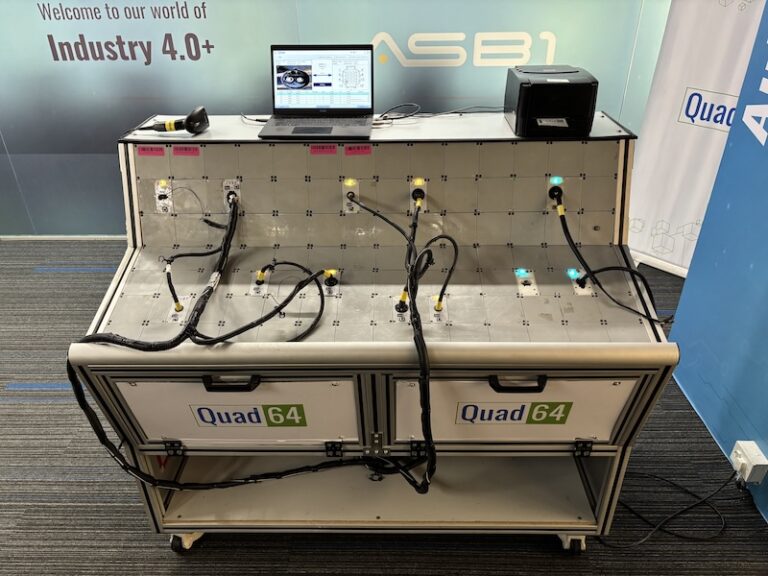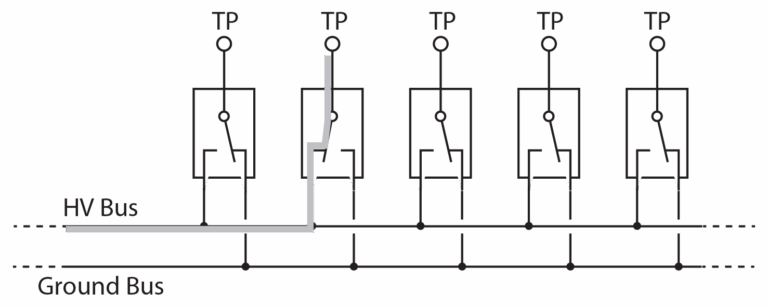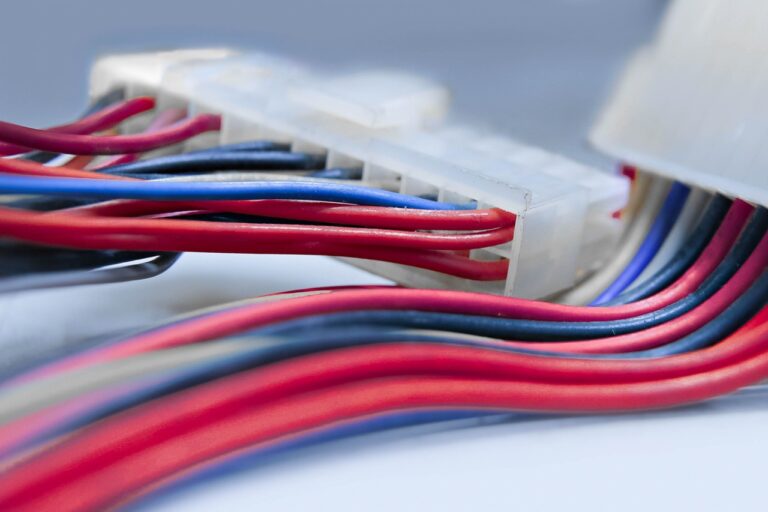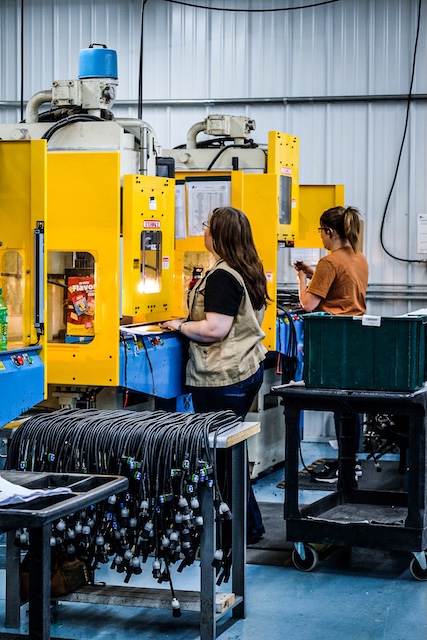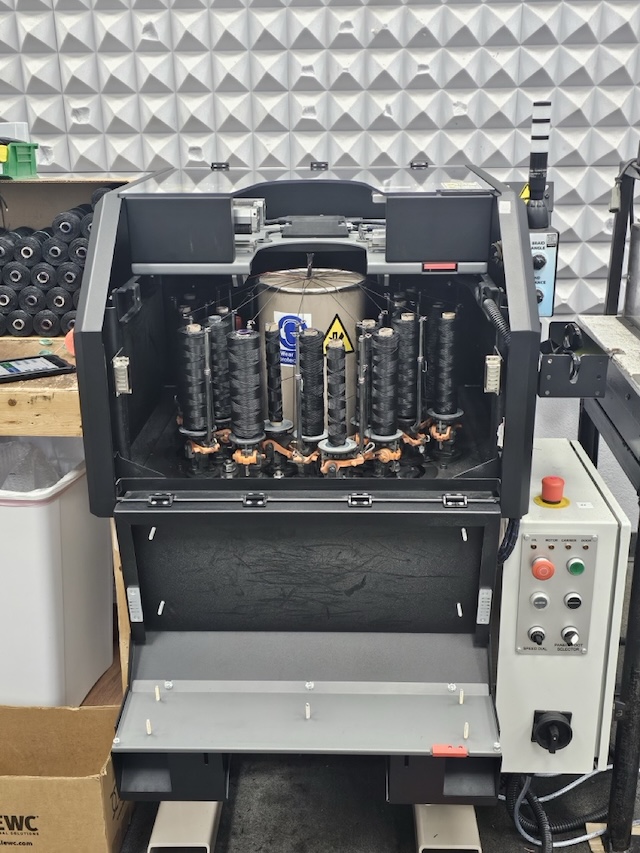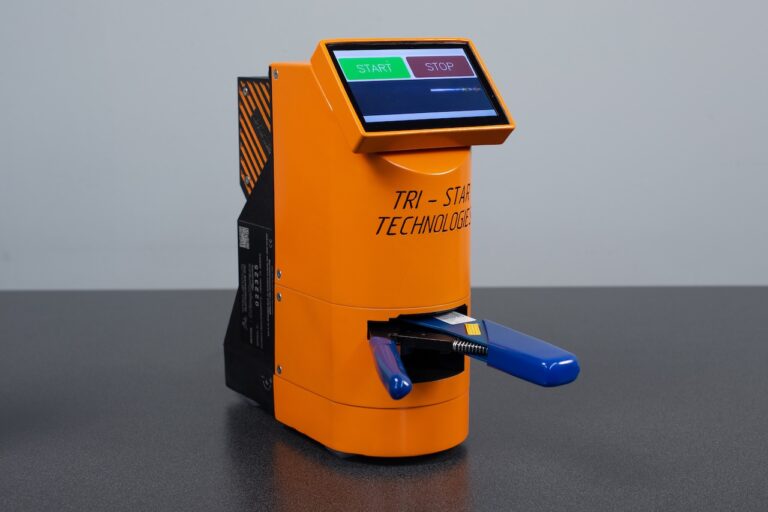HellermannTyton – A History of Innovation
Electrical wiring in the early 1930s was encased with rubber and bound by cotton thread. Stripping the wire for termination produced very frayed and untidy results. Inspired by the tiny rubber tubes in bicycle valves, German inventor and entrepreneur Paul Hellermann devised a system to address this problem.

His ingenious three-pronged tool easily stretched rubber sleeves, encapsulating the ends and preventing them from fraying (Figure 1). Paul Hellermann GmbH was established in 1935 in Hamburg, Germany to produce and market the tools, along with the chloroprene rubber sleeves and grommets in various sizes.

Coming to America
Intrigued by a myriad of opportunities, company leadership was determined to have a North American presence. They established operations in Milwaukee in 1969. Tyton Corporation of America was operated as a sales distributor of the natural and black colored cable ties being produced by Insuloid Manufacturing Company, wholly owned by Hellermann GmBH, in England. The U.S. operation was set up in the old Kaiser Tannery building on 30th Street and Hampton Avenue, occupying the third floor. Blank bags of cable ties would arrive from overseas, and small labels were then applied with a label gun.
Growth came quickly, and so did the need for space. Tyton relocated a year later, then again in 1972 to a newly developed industrial strip. By 1974, Tyton took over a 16,000-sq. ft. facility a few miles northeast of the current location.
Ralph Kendall became president, with Ray Lauffenburger as vice president. Lauffenburger and Ernie Klauder were the company’s two salespeople. At that time, Tyton was still just a distributor of Insuloid Manufacturing’s cable ties.
Recognizing an opportunity to improve the quality and timely availability of products, Kendall, still president of the U.S. operation, convinced corporate to allow manufacturing in Milwaukee. Thus began the shift from importer to manufacturer. Manufacturing got under way in 1975 with the purchase of three Arburg injection molding machines. Supervision and tooling were supplied by Paul Hellermann GmbH, the sister company in Germany.
Two Paul Hellermann employees traveled to Milwaukee to train the factory operators in handling the molds. Heinrich Kabel, director of engineering at the German location, and his secretary, Elke Tews, visited Milwaukee on multiple occasions to assist in process improvement. Tews turns out to have had more than an administrative role and was trained on how the presses operate. At one point, she highlighted a crucial maintenance step that solved a problem when running the cable ties.
By 1976, there were three injection molding machines and 27 employees in manufacturing, quality assurance and administration. The company produced three different cable ties, which were featured in a three-page catalog containing other Insuloid cable ties still produced overseas. There were no computers at that time to check stock or keep records. Each day, the office staff would handwrite the dollar amounts of orders. Every time the company reached $100,000 in sales, the team would go out to lunch and celebrate.
In July 1976, Dennis Plesha replaced Ralph Kendall as president, bringing prior experience in the cable tie business. He hired a number of salespeople, and revamped pricing to be more competitive. Under his direction, the business really began to flourish.
By 1978, there were six molding machines and 55 employees in manufacturing, warehousing and QA. They added three more ties, as well as Snapper hose clamps to the in-house manufactured products (Figure 2).

Recognizing the need for more space, a new building was erected on an empty site at the corner of Bradley and Faulkner Roads. Tyton moved to the new, 40,000 sq. ft. facility in August 1978. At the start of production, there were 12 molding machines, six from the previous location and six brand new ones.
The onboarding of Ed Dyer in 1983 signaled the beginning of a product engineering department. Plesha and Lauffenberger continued to lead the company. Dyer and Al Pharris, technical manager, collaborated to develop new products with nothing more than pencil and paper drawings. Dyer worked on a new hand tool, while Pharris designed other products.
Business at the Faulkner location had really accelerated by 1984, prompting the need for additional space, so the company invested in a 40,000-sq. ft. addition to the facility. Dyer the engineer began to assume another role: Dyer the architect. He designed a massive second story in addition to an expanded main level because of the growth he saw coming.
In 1986, Tyton launched the first hand tool to tighten and cut cable ties, the MK7 (Figure 3). The product portfolio really began to take shape, transforming Tyton into an industry solutions provider. At this point, the company found themselves collaborating directly with OEM engineers to provide better solutions. The truck and heavy equipment markets represented the initial OEM opportunity.

The advent of Computer Aided Design (CAD) reached the company in 1987. Their first CAD system computer featured a 40 Mb hard drive; state-of-the-art by standards at the time. Dyer would later recall laughing at the prospect of ever filling up that much space. Today, a single part file can be that large!
Soon, Tyton was serving other industries such as light vehicle, electrical wholesaling, telecommunications and appliances. In 1989, they introduced their first custom automotive part – the Corvette Canister Clamp (Figure 4). The following year, a molding facility was purchased in Naples, Florida to quickly respond to customer demand.

By 1995, the Faulkner facility added another 33,000-sq. ft. addition for the automated manufacturing of cable ties. In 1997, the company changed the name from Tyton Corp. to Tyton Hellermann. A year later, a larger, 115,000-sq. ft. facility was constructed to accommodate the growing Naples operation. That same year, a warehouse was added in Mexico to address growing wiring assembly production in the region.
On the heels of the increased market penetration, along with all the facility enhancements and additions, the next decade brought explosive revenue growth. Uniquely engineered cable ties such as the Wide Strap and Dual Clamp joined the ranks, as did TagPrint® Pro label creation software.
Perhaps the company name didn’t roll off the tongue as well as it should have. As a result, in 1999, all locations across the globe (27 at that time) united under the name HellermannTyton.
In 2000, the acquisition of UK-based RW Data resulted in HellermannTyton Data.
The data division introduced the game-changing CAT6 copper connectivity solution, RapidNet®, in 2003, demonstrating an increased focus on the datacom industry. This laid the groundwork for many industry-wide solutions in place today.
A new president took the helm in 2005. Jim Campion had started with the company 16 years earlier as executive vice president in charge of sales. In 2006, a nearby Milwaukee facility became the dedicated location for extruded and pre-terminated products.
It eventually became evident that the North American operations needed more manufacturing space to keep pace with growing demand. In July 2012, the company purchased a 92,000-sq-ft building three miles from HQ. This facility enabled HellermannTyton to supply every major harness maker in North America, as well as GM, Ford, Chrysler, BMW and Mercedes with existing and custom parts.
The already brisk momentum got a boost from identification products, which dominated the solar market almost immediately. Having code-compliant solar labels; along with a supporting mobile app and a number of fastening options, like the metal edge clip and fir tree ties; positioned HellermannTyton as the solar identification and wire management experts.
In 2013, HellermannTyton engineers guided the launch of the EVO® 7 manual cable tie application tool (Figure 5), which dominated the field in terms of comfort and performance.
A year later, in 2014, HellermannTyton launched the AT2000 CPK automatic cable tie application tool. This wasn’t the company’s first automatic tool, but it did represent a huge a leap in technology, repeatability and flexibility.
The company’s Good Hope factory was working at capacity and beyond. All signs pointed to the need to expand yet again. In 2015, HellermannTyton more than doubled the size of its main North American manufacturing facility to 200,000 sq. ft.
In 2016, the U.S. team developed another industry first with the Ratchet P-Clamp family. The following year, a major remodeling began at the headquarters on Faulkner, beginning with a bright, modern customer care department and extending throughout the rest of the facility. A production facility opened in Monterrey, Mexico to address a growing need for product assembly.
President Jim Campion retired in the spring of 2017. He didn’t hesitate to name his replacement – the talented and energetic vice president of marketing, Terry Tuttle, a 29-year veteran with the manufacturer. Terry’s leadership and guidance have taken the company forward while maintaining its unique culture.
HellermannTyton celebrated 50 years in North America – occupying 10 sites – in 2019. Today, the interior of the Faulkner HQ would be unrecognizable to anyone who retired two years earlier. Successive years of double-digit growth are the result of extremely talented people, strong customer relationships and a unique understanding of the technical markets the company serves with equally technical solutions.

























